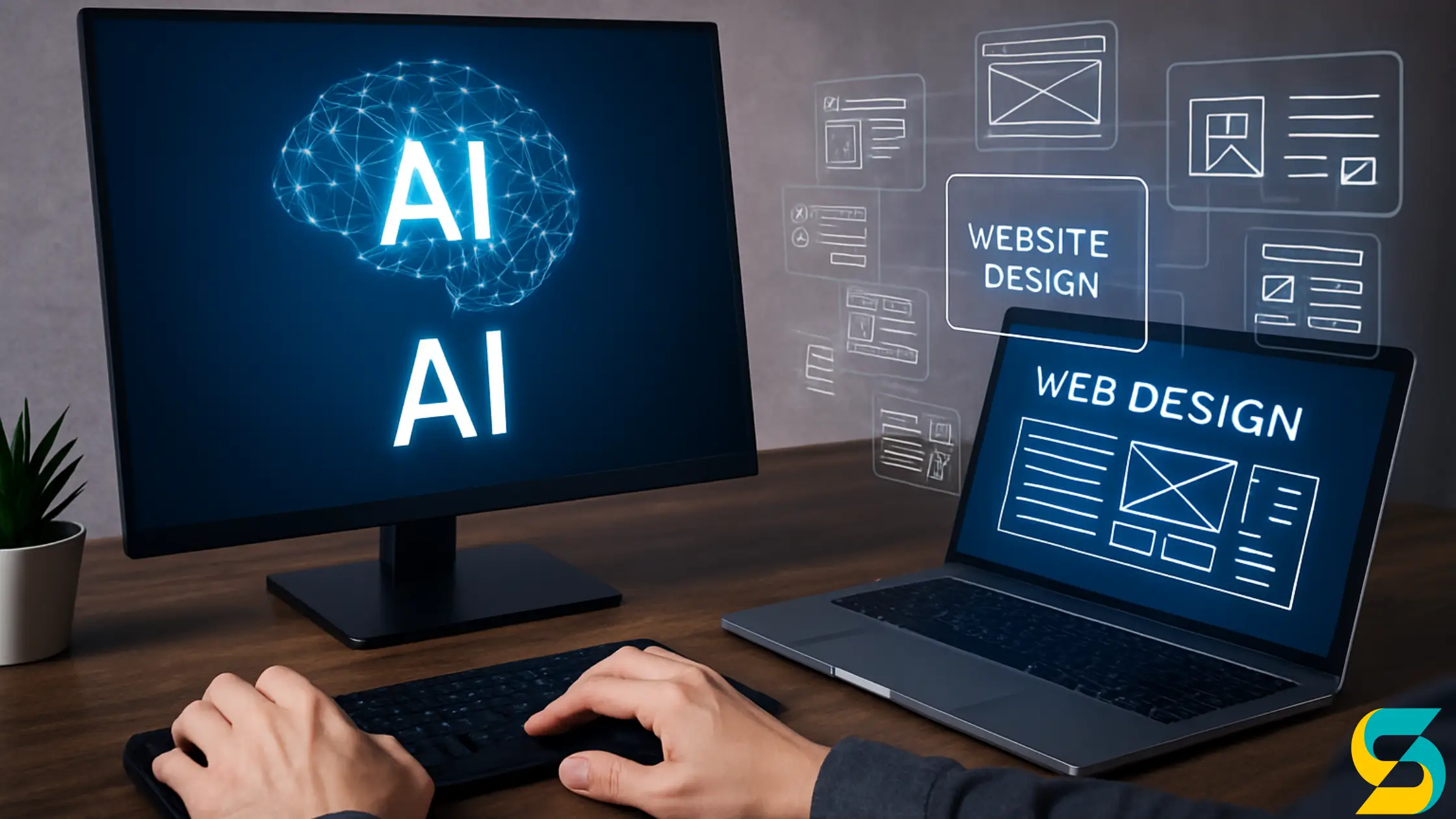
How AI is Revolutionizing Web Design Tools, Tips & Trends
Alright, let’s just cut to the chase. You’re here because you know AI is blowing up web design in 2025. It is. No doubt. And if you’re not already thinking about AI web design tools, well, you’re probably feeling a bit behind the eight ball. And fair enough! This isn’t just some passing fad; it’s a fundamental shift. I’ve seen a few of these “revolutions” in my time, and this one? This one’s got legs. So, what I want to do here is give you the real skinny – no fluff – on how AI is changing the game, which AI web design tools are actually worth your attention, the trends that are more than just buzz, and some honest advice from someone who’s, let’s say, seen a few website builds.
So, These AI Web Design Tools... What's the Big Deal?
Remember the old days? Hours spent pushing pixels. Coding until your eyes bled. Okay, maybe a slight exaggeration, but you get the picture. The core creative genius, that human spark? That’s still king. Always will be. But the process? Man, that’s where things are getting a serious jolt from AI web design tools. Think of them less as job-stealers and more like… well, like that intern you always wished you had: super smart, learns fast, and happy to do the stuff that usually makes you want to tear your hair out.
They’re not here to make designers obsolete. Far from it. They’re here to free us up. Imagine offloading the tedious bits – the repetitive stuff, the initial grunt work of sifting through data, maybe even roughing out first-pass layouts. This is what good AI web design tools are bringing to the table. It means more time for us humans to focus on the why – the strategy, the unique creative angles, the stuff that actually makes a website connect and convert. Faster projects? Yep. Smarter, data-backed decisions? You bet. Websites that genuinely feel like they get the user? That’s the goal.
Which AI Web Design Tools Should Actually Be on Your Radar?
The market’s flooded, right? Everyone’s slapping “AI-powered” on everything. But some AI web design tools are genuinely changing how we work in 2025. Here’s my take on the categories that matter:
1. AI Website Builders – The Next Generation:
- You know the names – Wix ADI, Jimdo, Bookmark. They’ve been around. But now? They’re getting scarily good. They’ll ask you some questions – what’s your business, what are you trying to achieve, what vibe are you going for – and boom, a surprisingly decent starting point for a website. Many are now packed with specific AI web design tools for picking images, suggesting layouts, even spitting out some draft copy. Not perfect, but a heck of a jumpstart.
2. The AI Design Assistant – Your In-App Buddy:
- Think of your favorite design programs – Figma, Adobe XD, Sketch. Now imagine them with a little AI helper built-in. That’s what we’re seeing. Plugins, native features… they’re using AI to suggest color palettes that actually work, font pairings that don’t suck, and layout tweaks based on solid design principles and – crucially – accessibility. Some of these AI web design tools will even look at what you’ve done and go, “Hey, maybe try this instead?”
3. Content & Visuals on Demand (Thanks, AI):
- This is a big one. AI copywriters like Jasper or Copy.ai? They can actually write pretty usable website text. Need a unique image? AI generators like Midjourney or DALL-E 2 can whip something up. For web design, this is like having a creative team on tap for those custom graphics or compelling bits of text you always need right now.
4. Hyper-Personalization – The AI Secret Sauce:
- Honestly, this stuff is exciting. These are the AI web design tools that use machine learning to watch, in real-time, how individual people are using a site. And then? They subtly change things – the content, the layout, the CTAs – to better match that specific user’s apparent needs or interests. It’s about making every visit feel uniquely relevant. Get this right, and conversion rates can go through the roof.
5. AI for the Code Monkeys (And I Say That With Love!):
- Tools like GitHub Copilot, Tabnine… developers are swearing by them. Not strictly “design” tools in the visual sense, sure, but they’re dramatically speeding up the coding part of web design. Suggesting code, finishing your lines, even helping bridge the gap between a design mockup and actual, working code. Anything that makes that process faster is a win.
Big Web Design Trends AI is Pouring Fuel On
It’s no accident that the rise of AI web design tools lines up perfectly with some of the hottest trends we’re seeing:
- Personalization That Actually Feels Personal: AI is making it possible for websites to adapt to each visitor in ways that used to be pure science fiction. Custom content, tailored recommendations… it’s powerful.
- Accessibility by Default (Almost): More and more AI web design tools are being built with accessibility in mind, automatically flagging issues like bad color contrast or missing alt text. This is just good for everyone.
- “Hey Website…” – Voice is Getting Louder: As AI gets better at understanding natural language, expect more websites you can genuinely interact with using your voice. Search, navigation… it’s coming.
- Designing Smarter, Not Harder (Predictive Stuff & A/B Testing): AI can look at data and make educated guesses about which design changes will actually move the needle, taking a lot of the guesswork out of A/B testing.
- Letting the Machines Brainstorm (Generative Design): You set the goals, the constraints, and AI algorithms can spit out a whole range of design options. Sometimes they come up with stuff you’d never have thought of. That’s cool.
Using AI Web Design Tools Without Losing Your Mind (Or Your Soul)
So, how do you actually use this stuff effectively? Here’s my two cents:
- Be a Sponge. Seriously. This field of AI web design tools? It’s not slowing down. So, stay curious. Poke around with new platforms. Actually take the time to figure out how they work, not just what they do.
- Your Human Skills Are Now Your Superpowers: Let the AI handle the drudgery. Your value? It’s increasingly in understanding people – your users, your clients. It’s in defining the real goals. It’s in making sure the AI’s output actually reflects the brand’s heart and doesn’t, you know, say something stupid or unethical.
- AI is a Tool, Not a Replacement for Your Brain: The best work? It comes from humans and AI working together. Use AI for inspiration, for speed, for data insights. But for the love of good design, always, always apply your own critical thinking and creative judgment. The AI doesn’t “know” your client like you do.
- Keep a Human Hand on the Tiller (Quality & Ethics): This is huge. AI can generate stuff that’s biased, inaccurate, or just plain weird. Someone human needs to be the gatekeeper. Quality control is still on you.
- Don’t Try to Eat the Whole Elephant at Once: You don’t need to revolutionize your entire workflow overnight. Pick one or two AI web design tools that solve an immediate pain point. Get comfortable. See the benefits. Then, maybe add another. Baby steps.
FAQs: The Quick & Dirty on AI Web Design Tools
Q1: Be honest – are AI web design tools going to make designers redundant?
A: Look, I get why people ask this. But no. Not if designers are smart. AI web design tools are brilliant at tasks. They can't do strategy, deep empathy, true out-of-the-box creativity, or solve really complex, nuanced human problems. The designer's role evolves – more director, more strategist, less pixel-pusher.
Q2: I'm a total newbie to this AI stuff. Where should I even start with AI web design tools?
A: Good question! For raw beginners, AI website builders – Wix ADI, maybe some features in Bookmark AI – are pretty gentle entry points. They do a lot of the initial heavy lifting. For content, something like Canva's Magic Write or a very simple AI copywriter can give you a taste without being overwhelming.
Q3: How do I stop my AI-assisted designs from looking like every other AI-assisted design out there?
A: Ah, the "sea of sameness" fear. Valid. The trick is: AI output is a starting point. Your unique input, your creative direction, your specific customizations, your deep understanding of the brand – that's what makes it yours. Mix and match. Tweak relentlessly. Infuse your soul into it. Don't just hit "generate" and call it a day.
Q4: What are the hidden traps or downsides of relying too much on AI web design tools?
A: Oh, there are definitely a few. Over-reliance can lead to that generic look we just talked about. There's the risk of AI hallucinating – making stuff up – or perpetuating biases from its training data. And sometimes, it just gets things plain wrong. Constant human vigilance, my friend.
Q5: How are these AI web design tools affecting the folks who actually write the code?
A: Big time, in some ways. AI code assistants are already a massive help, speeding up development and debugging. Expect AI web design tools to get even slicker at that design-to-code handoff, meaning less manual grunt work for developers on more standard components. They can then focus on the really complex stuff.
Parting Thoughts: AI Web Design Tools & Your Future
So, there you have it. 2025 is the year AI web design tools stopped being a “maybe someday” and became a “right now, get on board” kind of deal. They’re changing how we think, how we work, how we create. By really getting under the hood of these tools, by keeping an eye on where things are actually heading (not just the hype), and by smartly weaving them into your process, you can do some pretty amazing things. Faster, smarter, more connected. The future of web design is this fascinating dance between human creativity and artificial intelligence, and AI web design tools are leading the choreography. The only real question is: are you ready to learn the steps?



